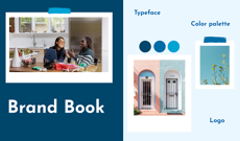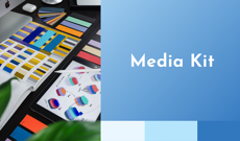Content lives at the core of any business, for without the muscles the body won’t stand upright. But you have to flex your muscle of content well, if you want your business to take the necessary shape. And the best way to do that is to focus on your audience’s needs. What do they want to get and in what format?
Too often, companies base their content creation process on their own aspirations and expectations, rather than on client needs. It’s mostly true for those who’re just starting to figure out the workings of business, but even some of the bigger, more experienced companies, including a few giants, make this mistake every now and again.
So how to create content for the audience, not for yourself? It’s actually not that difficult. Just follow the guidelines below, backed with quotes from various content creation marketing experts.
#1 Start with Research
Obvious, yet inevitably overlooked by some companies.
There’s no way you can simply rely on your sixth sense and assume you know what your prospects want. Without proper research to back your ideas, your business won’t go far. People simply won’t feel connected to your site, product, or service.
“Make sure you’ve considered what your business offers and identified your audience to a T before throwing money away on a site they aren’t visiting,” claims Devin Littlefield, Digital Marketing Professional, in his article.
So, how can you get to know your audience better? You can talk to your prospects, throw a survey their way, or conduct customer development interviews. Learning directly from your audience’s experiences is all the help you need—they’ll have all your questions answered, and you’ll deliver the best possible content, and product, to them.
Another starting point is looking at the content creation marketing of your direct and indirect competitors—and anyone else in an industry similar to yours. See what works for them, notice what doesn’t, and then outrival them. Your content should speak for your product in a way that will also speak to your audience. It’s a fine line, and not all of your competitors will know how to handle it well. But you can give it a shot.
#2 Keep Your Team in the Know
To provide quality content for your audience, you have to make sure you and your team are on the same page. Does everybody know the agenda, the client needs, the ideas and values to convey? Your team’s goal is to create content for people: texts people want to read, imagery and videos they want to see.
A great idea is to have a corporate content guide, as well as a brand book. This way, a copywriter can turn to the content guide with questions about the preferred writing style, formatting, punctuation preferences, and more. Plus, the brand book is the perfect source of inspiration and guidance for anyone else on your team, especially those who work with visuals. Include recommendations on the coloring schemes your designers and videographers should stick to, the graphic elements, patterns, and fonts they should use. For instance, Ben & Jerry’s brand guide is a fun and thorough resource for their team:
Once your team knows the course they should take in crafting the right message for your audience, they’ll go beyond ordinary content to attraction content, which should be your ultimate goal. Why? Matt Lee, Founder at Lead Generation Experts, has the answer. He claims that attraction content addresses the concerns of your audience and “builds your authority as an expert in the industry who can provide the goods, services, and knowledge they need to be successful”. What more do you really need?
#3 Put Your Niche above SEO
Yes, you heard us right. Of course, SEO is vital—and we’ll cover it in the next tip—but it won’t work for you unless you use the keywords your audience can relate to. So first off, focus on your niche when you work on your content. Become the digital content creation expert they’re looking for, which incidentally is what a marketing professional Devin Littlefield suggests in his article:
You will be perceived as a thought leader if you create content that is focused on your niche, shares a unique perspective, and is available in multiple mediums.
So whatever format your content comes in, keep your audience’s interests at the center of it. Don’t babble about anything business-related for the sake of SEO—strike up a meaningful conversation relevant to your niche instead. And if you add several on-point keywords, your content will thrive. For example, if you're in the cybersecurity niche, you can go after related topics like identity theft, tech support scams, phishing, etc. The more you can write about related keywords, the better your SEO will perform.
#4 Do SEO Right
Dismissing SEO altogether isn’t an option either. You just have to be smart about it. Once you know your niche well enough to create quality content for it, do the extra digging, aka optimize that content.
You can hire an in-house SEO expert, or outsource the job. Tools like Ahrefs or Semrush can help you conduct a thorough analysis of the content within your market. They’ll uncover the most popular keywords that appear in search results, and then you can weave them subtly, yet effectively into your texts, videos, images.
#5 Cover All Formats
The digital world is too diverse of a place to produce content in just one format, so don’t rely solely on your site. Speak to your audience in the formats they enjoy, be it an article, a video, audio marketing content, or perhaps even a flipbook. When you deliver your message in the right format, people are more likely to understand it and choose your business, make a purchase, and drive conversions. Hilton’s flipbook is a great example of an amalgam of formats: texts, images, GIFs.
Apart from the format, remember to keep to the platforms your audience uses regularly. It’s important to cover all grounds—posts on social media, podcast and webinar platforms, your blog, and whatnot.
You can also drive audience engagement using the same content on different channels. Let’s say, you create a personal, relatable video—upload it to YouTube, post parts of it across social media with different messaging, share it in an email newsletter. A versatile content creation process will bring better results.
Coming out of a production with two videos vs one video will be a good use of your time, money and effort.
Hence, even if you have a small team, you can always repurpose ready content into a new format to reach a wider audience.
#6 Make It Accessible
Obviously, your content has to be user-friendly, and this refers to users of all backgrounds and abilities. Screen reader devices have to be able to scan your content and voice it to their users. For instance, if you create PDFs, we have a guide on keeping them accessible.
Also, you should add ALT text to any visual content you create—it’s a good practice applicable not only to people with disabilities, but also to those with poor Internet connection. If an image or video doesn’t load, people will be able to get a quick summary about it from the ALT text. So everyone in your audience can get access to your content. Plus, web crawlers read ALT texts as well, which means you can get an SEO boost while taking care of accessibility. A clear win-win. And if you want to check websites, you can use a website accessibility checker.
While the above is vital, you shouldn’t be thinking of accessibility only in terms of ADA or WCAG compliance. Your content should be accessible on its own too, i.e. your audience should have no difficulty discovering it or interacting with it. What do they actually want and need?
It’s worth taking “user intent” into consideration when you’re working on your content strategy.
Just imagine a gigantic lead form that gates an ebook or a whitepaper—it’s an obstacle your audience might not want to deal with. Instead, you can settle on a short form they can skip, or perhaps even a fun, built-in survey they’d enjoy filling out? Typeform or SurveyMonkey could help you there.
And there’s many more content creation techniques that will make your content friendly and easily accessible. Replace your salesy call-to-action with a more personal one and place the in-video CTAs carefully, so they don’t cover your visuals. Set clear hyperlinks so people know where they’ll end up upon clicking them. Make sure your ads don’t distract people from the content they actually want to consume. The more accessible and unhindered your content is, the more eagerly your audience will engage with it.
#7 Be Yourself
As long as you stay true to yourself and your brand, people should soon start recognizing the content you create—from the first paragraph or the first few seconds of a new video. And if your messaging and values click with them, your company will become the brand they want to connect with and learn more about. Conversions, customer retention, and loyalty will follow.
Your initial research will help you discover the perfect digital content creation process for you—you’ll know what exactly to create for your audience, and in what format. But don’t stop there; customer needs may change, and you should evolve together with your audience. This shouldn’t affect the values you offer—rather the way you communicate those values to your audience. You should always be specific in order to build a strong connection with the audience and to make sure “your brand voice feels real and relatable”, according to Ann Handley, a content guru. If people can trust you to deliver a product or service that always reflects their interests, they’ll never look the other way.
Wrapping up
People-centric content creation is exactly what any business needs, so hopefully the tips above will help you build the right strategy. As long as you think of the customer first, your product or service will become indispensable for those who use it.





